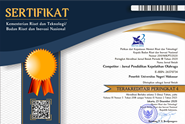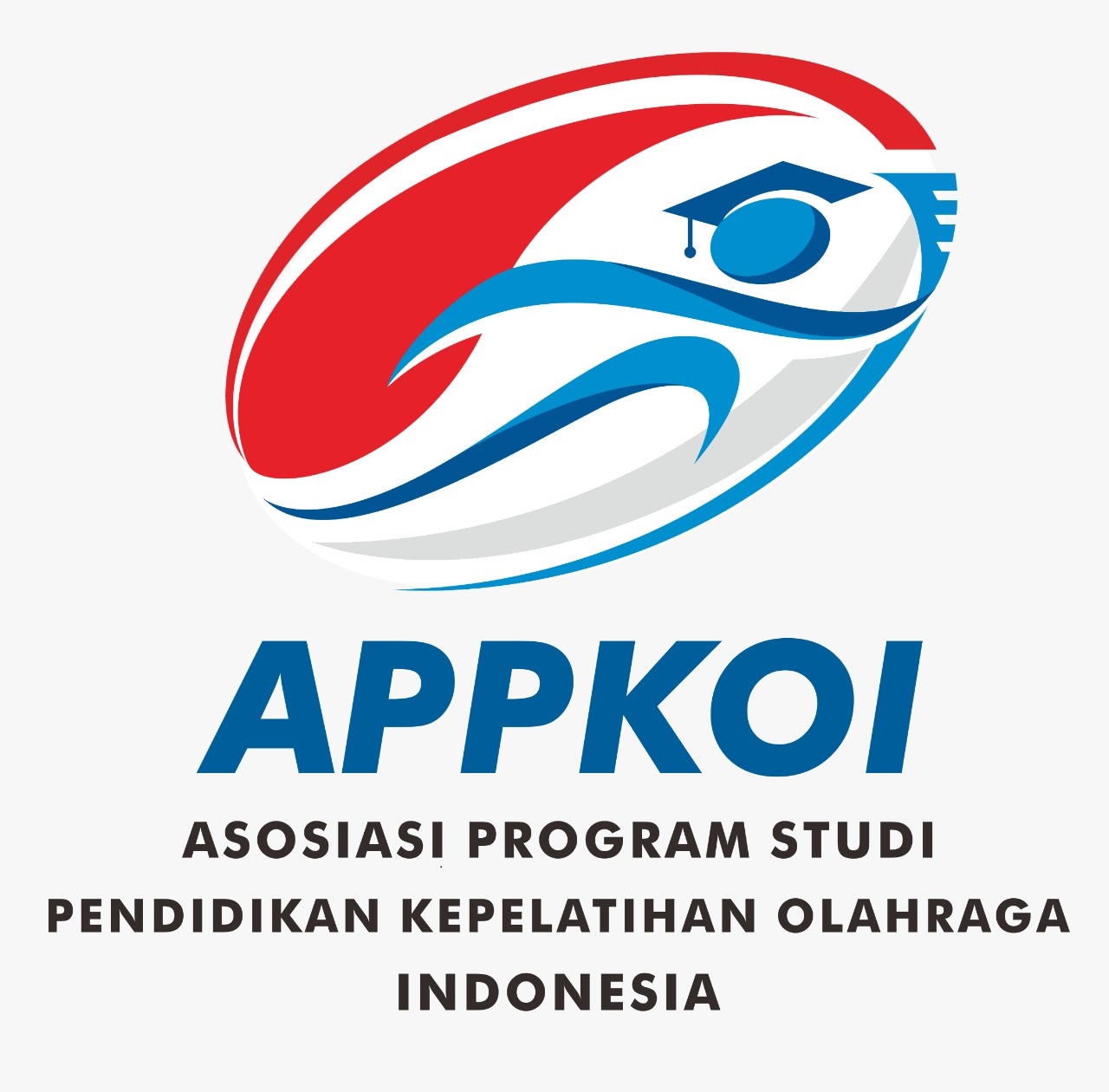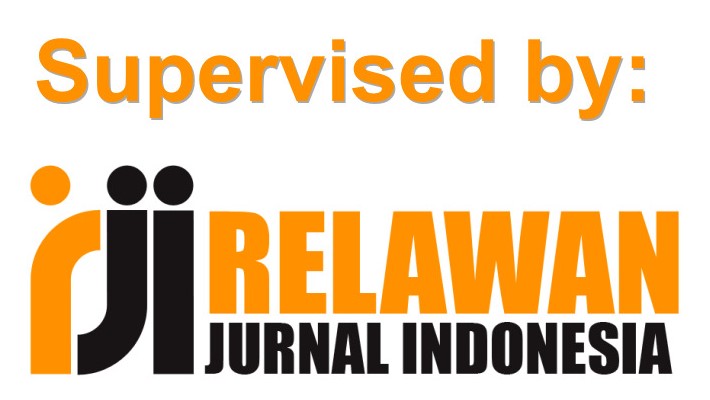HUBUNGAN ANTARA KEKUATAN OTOT TUNGKAI DAN SUDUT TAPAK KAKI DENGAN KECEPATAN LARI 50 METER MAHASISWA PRODI. PENJASKES FKIP UNMUL SAMARINDA
(1)
(*) Corresponding Author
DOI: https://doi.org/10.26858/com.v3i1.659
Abstract
ABSTRAK
Penelitian ini bertujuan untuk mengetahui hubungan antara lain (1) kekuatan otot tungkai dengan kecepatan lari 50 meter, (2) Untuk mengetahui hubungan sudut tapak kaki dengan kecepatan lari 50 meter, dan (3) Untuk mengetahui hubungan antara kekuatan otot tungkai dan sudut tapak kaki dengan kecepatan lari 50 meter. Penelitian ini termasuk jenis penelitian deskriptif. Populasi penelitian ini adalah seluruh mahasiswa Program Studi Pendidikan Jasmani dan Kesehatan FKIP Unmul Samarinda dengan jumlah sampel penelitian 40 orang siswa yang dipilih secara random sampling. Teknik analisis data yang digunakan adalah teknik analisis korelasi dan regresi dengan menggunakan sistem SPSS Versi 15.00 pada taraf signifikan 95% atau a0,05. Bertolak dari hasil analisis data, maka penelitian ini menyimpulkan bahwa: (1) Ada hubungan yang signifikan kekuatan otot tungkai dengan kecepatan lari 50 meter, terbukti nilai r0 = 0.839 (P < a0,05), (2) Ada hubungan yang signifikan sudut tapak kaki dengan kecepatan lari 50 meter, terbukti nilai r0 = 0.811 (P < a0,05), dan (3) Ada hubungan yang signifikan antara kekuatan otot tungkai dan sudut tapak kaki dengan kecepatan lari 50 meter, terbukti nilai R0 = 0.851 (P < a0,05). Tungkai sebagai penggerak utama saat lari sprint. Sudut tapak kaki yang ideal, memungkinkan untuk memiliki kemampuan bertumpu lebih luas. Dengan demikian nampak bahwa sudut tapak kaki memegang peranan penting dengan dukungan unsur fisik kekuatan otot tungkai akan mendukung dan menunjang kecepatan lari 50 meter. Penggabungan dengan kedua komponen akan lebih efesien sebab sudut tapak kaki yang besar dengan dukungan komponen fisik kekuatan otot tungkai, akan menghasilkan kecepatan maksimal pada lari sprint. Pada hakekatnya peranan sudut tapak kaki terhadap kecepatan lari sprint yaitu pada saat awalan yang beralih kemampuan maksimal atlet yang berhubungan dengan dasar pijakan, sehingga penekanan berat badan tidak seluruhnya dibebankan oleh tungkai, tetapi setelah menuju ke telapak kaki dan ujung kaki maka penekanan terjadi hingga arcus pedis berperan sebagai pegas yang kuat untuk ke arah ke depan dengan cepat.
Kata Kunci : Kekuatan Otot Tungkai, Sudut Tapak Kaki, Kecepatan Lari 50 Meter
ABSTRAC
This study aims to determine the relationship between the other (1) leg muscle strength with a running speed of 50 meters, (2) To determine the relationship angle with the foot speed to run 50 meters, and (3) To determine the relationship between muscle strength of leg and foot angle the running speed of 50 meters. This study includes a descriptive type of research. The study population was all students of Physical Education and Health Studies FKIP Unmul Samarinda with a sample of the study 40 students chosen at random sampling. Data analysis techniques used were correlation and regression analysis techniques using SPSS system version 15:00 on 95% or a significant level of a0.05. Starting from the results of data analysis, the study concluded that: (1) There is a significant relationship with the leg muscle running speed of 50 meters, proved the value of r0 = 0,839 (P < a0.05), (2) There is a significant point of footprints with the running speed of 50 meters, proved the value of r0 = 0811 (P < a0.05), and (3) There is a significant relationship between musclea strength of leg and foot angle to the running speed of 50 meters, proved the value of R0 = 0851 ( P < a0.05). Leg as the prime mover while running sprints. The ideal foot angle, allowing for a broader based ability. Thus it appears that foot angle plays an important role in support of the physical elements of the leg muscle strength will support and sustain the running speed of 50 meters. Merging the two components would be more efficient because a large angle footprints with the support of the physical components of the leg muscle strength, will produce the maximum speed in sprinting. In effect the role of sole point of sprint running speed is at maximum capacity switch prefix athletes associated with the foundation, so the emphasis is not entirely the weight imposed by the leg, but after heading to the soles of the feet and toes then suppression occurs until the arcus pedis act as a strong spring to the direction of forward quickly.
Keyword : Leg Muscle Strength, Angle Tread Foot, 50 Meters Run SpeedArticle Metrics
Abstract view : 336 times |Refbacks
- There are currently no refbacks.
Copyright (c)
COMPETITOR IS LICENSED BY :
 COMPETITOR is licensed under a Creative Commons Attribution 4.0 International License.
COMPETITOR is licensed under a Creative Commons Attribution 4.0 International License.
COMPETITOR EDITORIAL LOCATION :
![]() Kampus FIK Banta Bantaeng, Jalan Wijaya Kusuma Nomor 14, Rappocini, Makassar, Postal Code 90222
Kampus FIK Banta Bantaeng, Jalan Wijaya Kusuma Nomor 14, Rappocini, Makassar, Postal Code 90222
COMPETITOR IS INDEXED BY















